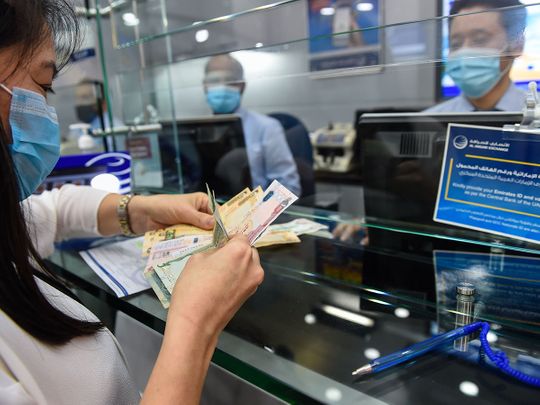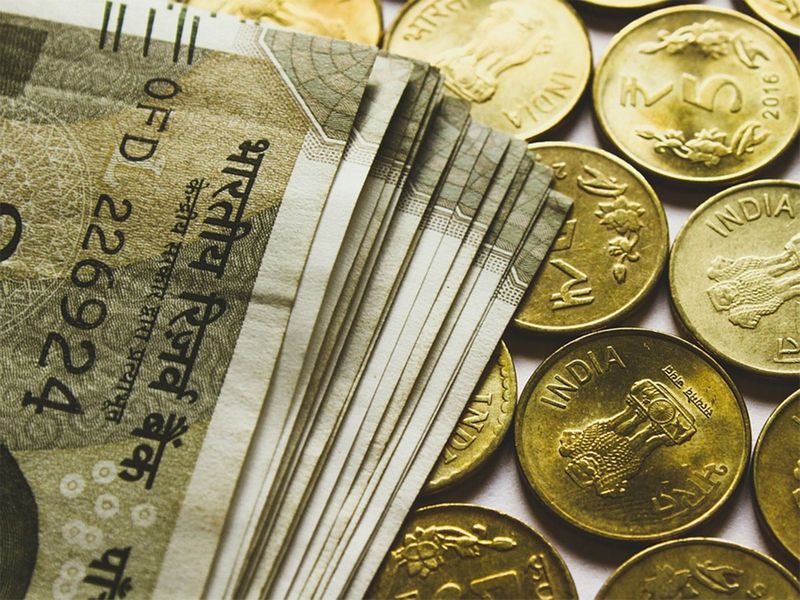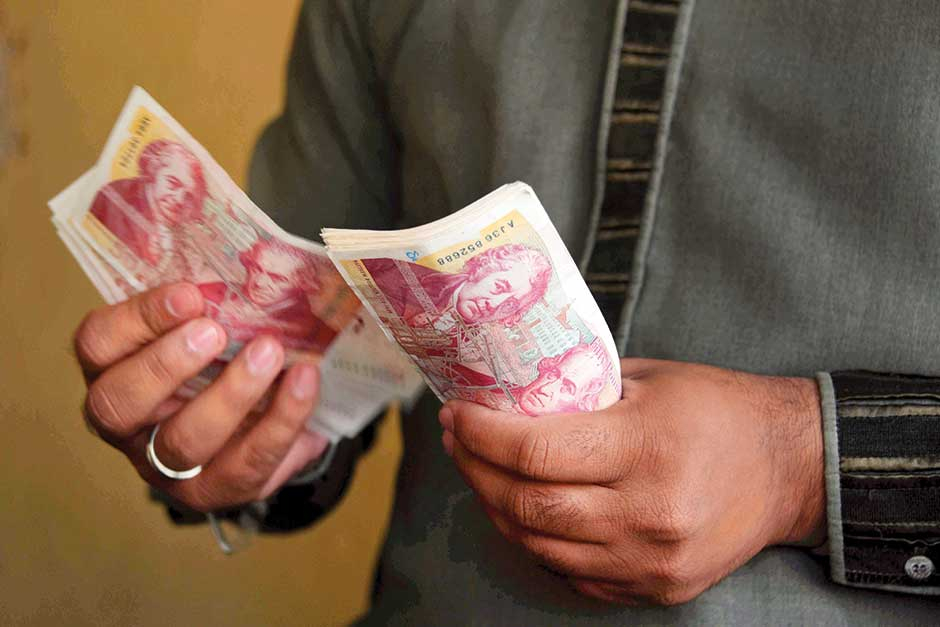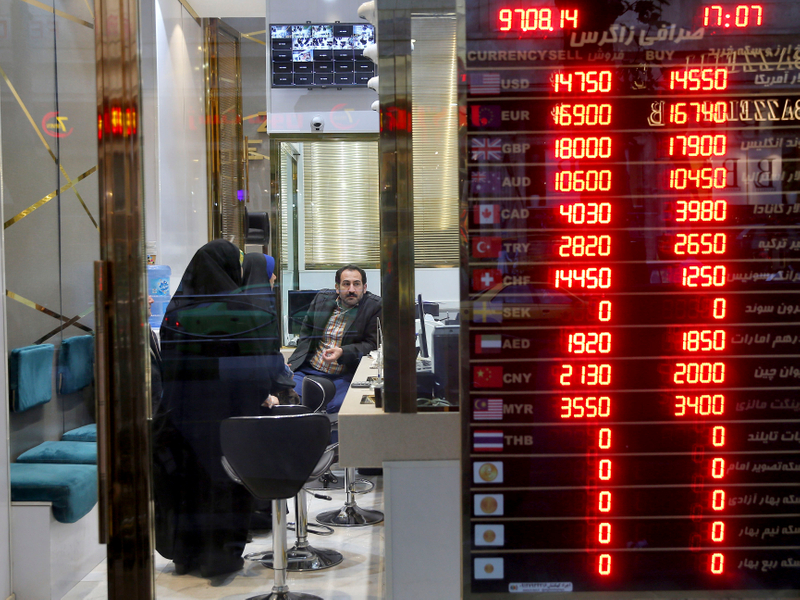
Dubai: Remittances from the UAE are seeing a surge as several, particularly South Asian currencies, were losing ground and rates have been rising in the past weeks. But will remittance-beneficial currency trend continue?
Will currency back home rise or fall?
When it comes to sending money back home, it is vital to know whether it is currently an ideal time to remit. To understand whether it is or isn’t, one should first find out if your currency back home is expected to rise or fall in the days to come.
Here is an analysis of how these aforementioned currencies have been performing and expected to perform in the coming weeks and months, to help understand whether remitting money now is profitable or cost-effective, or should you wait it out for a few weeks for a better rate to come along.
Will the Indian Rupee drop in June?
With the Indian rupee currently at 19.85 to the UAE dirham, the Indian rupee last weakened to 72.91 against the US dollar.
According to research, the Indian rupee is expected to drop to Rs19.1 by the end of next month against the UAE dirham, but it is going to stay largely the same level in the coming days.
So it is financially prudent to remit now, as you will get more Indian Rupees for your UAE dirham’s worth, versus June-end. These rates are seen rebounding in July, rising to as much as Rs19.68.
During the rest of 2021, current analysis show rates will stay between Rs19.31-Rs19.74, indicating that the coming months will be the most cost-effective time to remit, when compared to the remainder of the year. The end of this year and the start of next year, rates are expected to drop.

Pakistani Rupee seen dropping in the coming weeks
In Pakistan, the buying rate of the US dollar was 153.45 Pakistani rupee (41.78 versus UAE dirham).
According to research, the Pakistani rupee is expected to drop to Rs41.4 mid-June, from the current Rs41.8 against the UAE dirham, before rising to Dh42 during the rest of June. However, rates will first rise to as high as Rs42.1 in the first week of June.
During the last weeks of May, the Pakistani Rupee will mostly average between 41.7 and 42, making it an ideal and profitable time to remit.
Global ratings agency Fitch Solution predicts the Pakistani currency to average weaker at Rs171.15 for every US dollar in 2021, citing higher structural inflation in the US.
Where is the Philippine Peso headed in the weeks to come?
According to research, the Philippine Peso is expected to average between 13.05-12.90 against the UAE dirham over the next one month – making it currently ideal to send money any time over the next coming weeks, as Peso will drop to 12.9 only by the end of next month.
The average exchange rate against the UAE dirham in May will be 13.05, with the currency slipping just 0.6 per cent in the month. Over the month of June, rates are expected to drop at the end the month while the exchange rate averages at 13.06.
However, during the following months of July and August this year, rates are expected to drop to about 12.92-12.98. So, it would be cost-effective to remit during the preceding months. The Philippine Peso, which is currently 13.05 against the UAE dirham, dropped 1 per cent during the last quarter.
What about other South Asia currencies?
Asian currencies are seen falling, a Reuters poll showed on Thursday, as surging coronavirus cases and deaths across the region forced countries into fresh lockdowns and threatened their recovery from last year's economic slump.
Most notably, declines are seen on the currencies of South Korea, Singapore and Taiwan, China's yuan and the Philippine peso, according to a fortnightly poll of 12 respondents.
Taiwan and Singapore, hailed for their success in containing previous COVID-19 outbreaks, have recently seen a spike in cases, prompting social curbs and a race to ramp up vaccinations.

South Asia leads remittance demand
Inward remittance flows to South Asia rose by about 5.2 per cent in 2020 to $147 billion (Dh539 billion), driven by surge in flows to Bangladesh and Pakistan.
In India, the region’s largest recipient country by far, remittances fell by just 0.2 per cent in 2020, with much of the decline due to a 17 per cent drop in remittances from the UAE, which offset resilient flows from the US and other host countries, the World Bank data showed.
In Pakistan, remittances rose by about 17 per cent, with the biggest growth coming from Saudi Arabia followed by the European Union countries and the UAE.
In Bangladesh, remittances also showed a brisk uptick in 2020 (18.4 per cent), and Sri Lanka witnessed remittance growth of 5.8 per cent. In contrast, remittances to Nepal fell by about 2 per cent, reflecting a 17 per cent decline in the first quarter of 2020.
For 2021, it is projected that remittances to the region will slow slightly to 3.5 per cent due to a moderation of growth in high-income economies and a further expected drop in migration to the GCC countries.
The average cost of sending $200 (Dh734) to the region stood at 4.9 per cent in the fourth quarter of 2020, the lowest among all the regions, latest research from the World Bank showed.
Some of the lowest-cost corridors, originating in the GCC countries and Singapore, had costs below the sustainable target of 3 per cent owing to high volumes, competitive markets, and deployment of technology. But costs are well over 10 per cent in the highest-cost corridors, the global lender revealed.
COVID-19 and remittances
Despite COVID-19, remittance flows in 2020 registered only a smaller decline than previously projected, according the World Bank.
In a report released last week, the global lender stated that officially recorded remittance flows to low- and middle-income countries reached $540 billion in 2020, just 1.6 per cent below the 2019 total of $548 billion, according to the latest Migration and Development Brief.
The decline in recorded remittance flows in 2020 was smaller than the one during the 2009 global financial crisis (4.8 per cent). It was also far lower than the fall in foreign direct investment (FDI) flows to low- and middle-income countries, which, excluding flows to China, fell by over 30 per cent in 2020.

Verdict: COVID-19 blurs view on South Asian currencies
"COVID-19 is probably the dominant risk for emerging market and Asia for now," analysts at DBS bank wrote, noting worsening daily infection trends across the region.
"Without a high enough proportion of the population vaccinated, there will also always be risks of another COVID-19 wave, even if containment measures were deemed strong."
Investors bet on South Korea's won to drop, the Taiwanese dollar, Malaysia's ringgit, and the Thai baht were at their highest since April 8, while investors were the most bearish on Singapore's dollar since March 25.
How does remittance currently fare in the Middle East?
Remittance flows to the Middle East and North Africa region rose by 2.3 per cent to about $56 billion (Dh205 billion) in 2020. The growth is largely credited to strong remittance flows to Egypt and Morocco.
Flows to Egypt increased 11 per cent to a record high of nearly $30 billion (Dh110 billion) in 2020, while flows to Morocco rose 6.5 per cent. Also registering an increase was Tunisia (2.5 per cent).
In contrast, other economies in the region experienced losses in 2020, with Djibouti, Lebanon, Iraq, and Jordan posting double-digit declines.
In 2021, World Bank’s latest estimates show that remittances to the region is likely to grow 2.6 per cent due to moderate growth in the euro area and weak capital outflows from the Gulf Cooperation Council (GCC) countries.
The cost of sending $200 (Dh734) to the region fell slightly in the fourth quarter of 2020 to 6.6 per cent.
Costs vary greatly across corridors: the cost of sending money from high-income countries of the OECD to Lebanon remained very high, mostly in the double digits. On the other hand, sending money from GCC countries to Egypt and Jordan costs around 3 per cent in some corridors.
The OECD’s members are: Austria, Australia, Belgium, Canada, Chile, Colombia, Czech Republic, Denmark, Estonia, Finland, France, Germany, Greece, Hungary, Iceland, Ireland, Israel, Italy, Japan, Korea, Latvia, Lithuania, Luxembourg, Mexico, the Netherlands, New Zealand, Norway, Poland, Portugal, Slovak Republic, Slovenia, Spain, Sweden, Switzerland, Turkey, the UK and the US.




_resources1_16a30b358e0_small.jpg)

